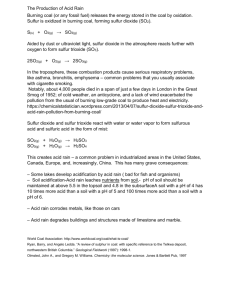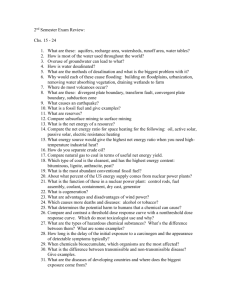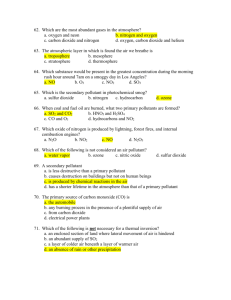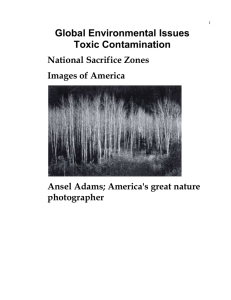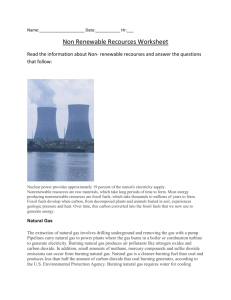Environmental Degradation in Eastern Europe
advertisement
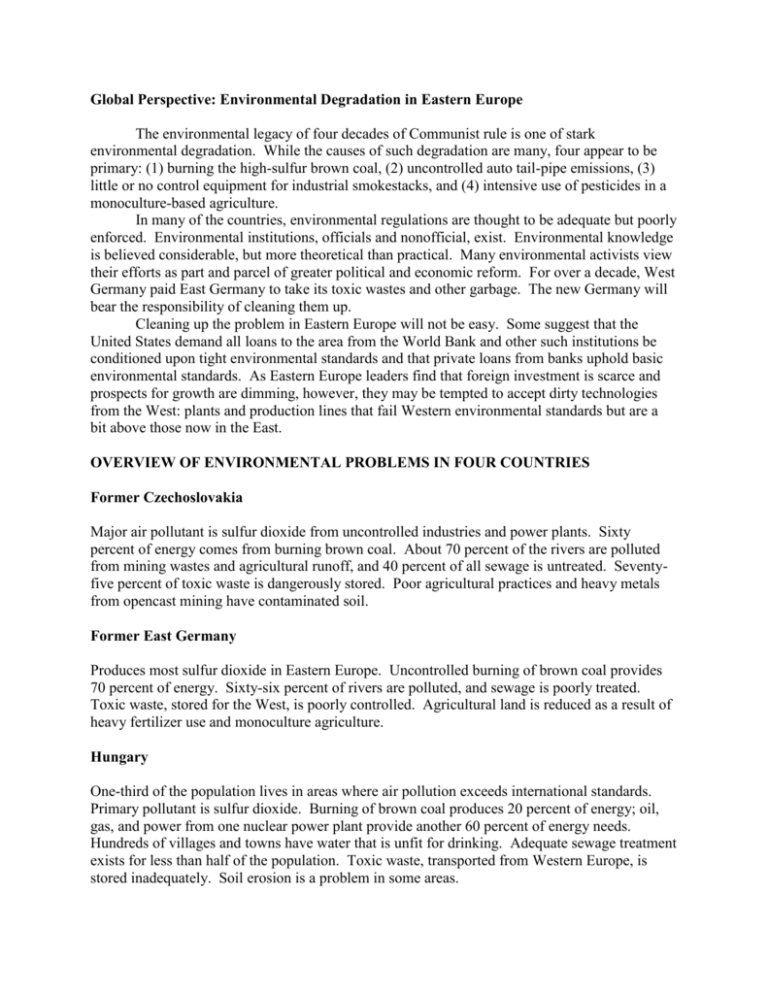
Global Perspective: Environmental Degradation in Eastern Europe The environmental legacy of four decades of Communist rule is one of stark environmental degradation. While the causes of such degradation are many, four appear to be primary: (1) burning the high-sulfur brown coal, (2) uncontrolled auto tail-pipe emissions, (3) little or no control equipment for industrial smokestacks, and (4) intensive use of pesticides in a monoculture-based agriculture. In many of the countries, environmental regulations are thought to be adequate but poorly enforced. Environmental institutions, officials and nonofficial, exist. Environmental knowledge is believed considerable, but more theoretical than practical. Many environmental activists view their efforts as part and parcel of greater political and economic reform. For over a decade, West Germany paid East Germany to take its toxic wastes and other garbage. The new Germany will bear the responsibility of cleaning them up. Cleaning up the problem in Eastern Europe will not be easy. Some suggest that the United States demand all loans to the area from the World Bank and other such institutions be conditioned upon tight environmental standards and that private loans from banks uphold basic environmental standards. As Eastern Europe leaders find that foreign investment is scarce and prospects for growth are dimming, however, they may be tempted to accept dirty technologies from the West: plants and production lines that fail Western environmental standards but are a bit above those now in the East. OVERVIEW OF ENVIRONMENTAL PROBLEMS IN FOUR COUNTRIES Former Czechoslovakia Major air pollutant is sulfur dioxide from uncontrolled industries and power plants. Sixty percent of energy comes from burning brown coal. About 70 percent of the rivers are polluted from mining wastes and agricultural runoff, and 40 percent of all sewage is untreated. Seventyfive percent of toxic waste is dangerously stored. Poor agricultural practices and heavy metals from opencast mining have contaminated soil. Former East Germany Produces most sulfur dioxide in Eastern Europe. Uncontrolled burning of brown coal provides 70 percent of energy. Sixty-six percent of rivers are polluted, and sewage is poorly treated. Toxic waste, stored for the West, is poorly controlled. Agricultural land is reduced as a result of heavy fertilizer use and monoculture agriculture. Hungary One-third of the population lives in areas where air pollution exceeds international standards. Primary pollutant is sulfur dioxide. Burning of brown coal produces 20 percent of energy; oil, gas, and power from one nuclear power plant provide another 60 percent of energy needs. Hundreds of villages and towns have water that is unfit for drinking. Adequate sewage treatment exists for less than half of the population. Toxic waste, transported from Western Europe, is stored inadequately. Soil erosion is a problem in some areas. Poland Twenty-seven areas have been declared ecological danger zones; five regions have been declared disaster areas. Sulfur dioxide is the major air pollutant, especially in Upper Silesia and Krakow. The burning of brown coal supplies almost all energy needs. Nearly all rivers are polluted; water from one-third is unfit for industrial use. Seventy percent of sewage is untreated. Of the food produced in the Krakow area, 60 percent may be unfit for human consumption because of heavy metal contamination. ________________________________________________________________________ Sources: U.S. Environmental Protection Agency and World Bank.
